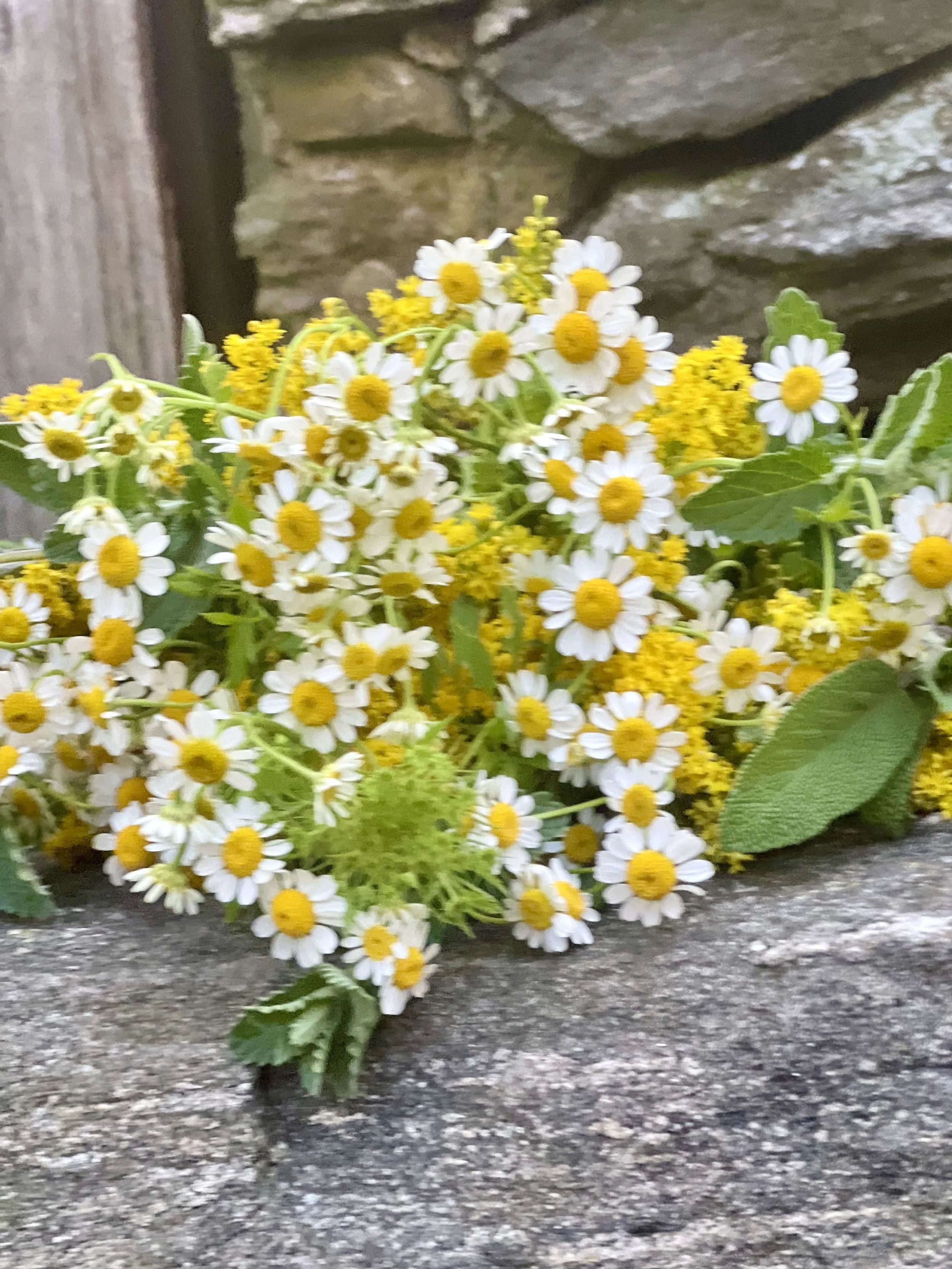All About Herbs: How & Why We Grow Them
At the time of writing this, we are celebrating National Herb Day! We love utilizing herbs in our gardens at Sweet Earth, so we wanted to chat about how and why we grow them here on the flower farm.
For Use in Bouquets
Herbs offer a whimsical, garden-inspired touch to many arrangements. Herbs add texture, color, and scent, making a more unique and well-rounded arrangement. Some of our favorite herbs to use in bouquets are:
Basil, Ornamental (Ocimum basilicum) - (Annual) -great for bouquets and pollinators
Feverfew (Tanacetum parthenium) - (Perennial) - great for bouquets, pollinators and teas
Lavender (Lavandula) - (Perennial) - great for bouquets, pollinators and teas
Mint (Mentha) - (Perennial) - great for bouquets, pollinators and teas
Oregano (Origanum vulgare) - (Perennial) - great for bouquets, pollinators and teas
Sage (Salvia officinalis) - (Perennial) - great for bouquets, pollinators and teas
Photo credit: Jordan Veitinger
For Edible Use
We also grow many herbs for use in teas and salads. Our tea blends are a combination of the leaves of the herbs as well as the flowers, and are created based on their medicinal and energetic properties.
Mint
Some herbal tea favorites are:
Lemon Verbena
Feverfew
Sage
Lavender
Mint
Some herbs for medicinal use include:
Echinacea can help boost your immune system and reduce your chances of catching a common cold
Calendula has anti-inflammatory qualities
Lavender is known to be calming
Lemon Verbena has amazing flavor and aroma, but is also recognized as a digestive aid
Some common herbs we use in bouquets that can also be used in salads and other recipes are:
Basil
Rosemary
Oregano
Calendula
Rosemary
Calendula
Lavender
Feverfew
For Pest Management
Several herbs can be used to deter pests without the use of chemicals! A lot of these attract pollinators to your garden as well — win-win! The natural oils and strong aroma of many herbs serve to prevent insect infestations and pests, such as deer, from
We plant basil and parsley extensively throughout our gardens to prevent beetles and other insects from damaging high-value crops such as roses and dahlias
We companion plant our alliums alongside perennials and annuals that are known to be favored by deer
We plant host plants, such as milkweed, to encourage specific pollinators
We plant bait plants, such as borage, to attract insects such as aphids away from other plants
How to Grow Herbs
First, select which ones you’d like to grow and use. Maybe you want to grow calendula, which can be used in all of the above ways! Once flowered, herbs make great additions to arrangements, and they also can be used in cooking and pest management. By choosing herbs like this that pull double or triple duty, you have a very hard-working and efficient garden!
Once you’ve chosen, there are a few things to keep in mind when growing your herbs:
Most herbs need 6-8 hours of sun
While many herbs look very small in their containers from the nursery or plant shop, they grow to be much larger and bushier — make sure to leave adequate room in your beds or containers for their full-grown size
Many herbs require regular harvesting or pinching to continue flowering and maintain a bushier plant
Some herbs, such as mint and oregano, will spread so be mindful of where you decide to plant them in the garden; or perhaps choose to only plant them in containers








